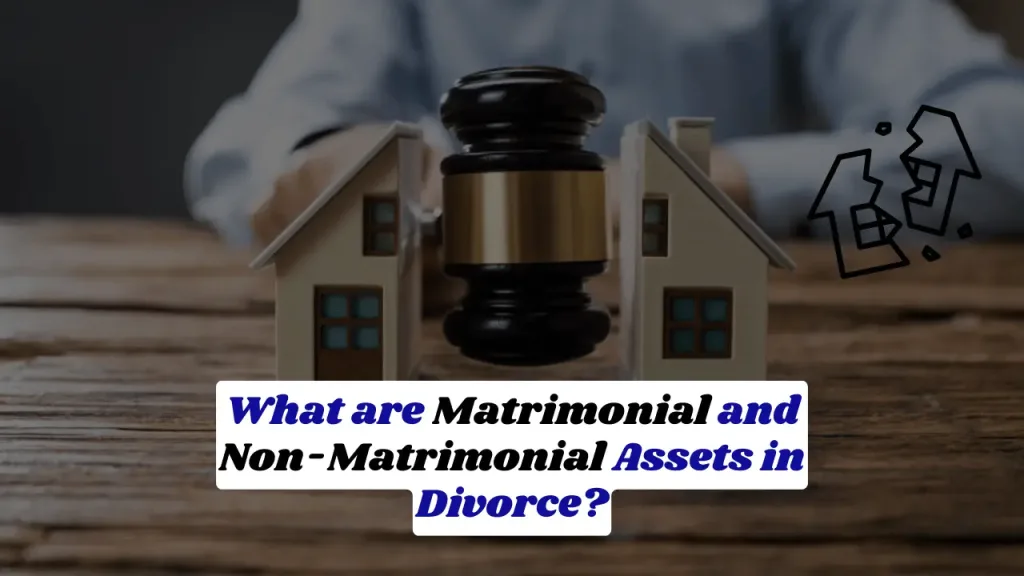What are Matrimonial and Non-Matrimonial Assets in Divorce?
Matrimonial assets—property and wealth acquired during the marriage—are typically subject to division in a divorce. On the other hand, non-matrimonial assets, such as those owned before the marriage or inherited, can be more complicated to divide. Understanding these distinctions is crucial, as they play a significant role in how a divorce settlement is reached. In fact, the American Academy of Matrimonial Lawyers reports that nearly 40% of divorce settlements involve the division of both matrimonial and non-matrimonial assets. This article will delve into how these assets are treated during divorce proceedings, provide expert insights, and offer practical tips on protecting your property.
Table of Contents
What Are Matrimonial Assets?
Matrimonial assets, often referred to as marital assets, are the properties and possessions acquired by both partners during their marriage or civil partnership. These assets are typically subject to division upon divorce or separation. The primary rule in divorce settlements is that matrimonial assets should be divided fairly between both parties. This is usually done on a 50/50 basis, but other factors such as financial need and contributions to the marriage can influence the division.
Examples of Matrimonial Assets:
- Family Home: This is consistently the largest asset involved. Even if only one partner’s name is on the title deed, the family home is typically considered a matrimonial asset, especially if it was used as the primary residence.
- Savings and Investments: This includes savings accounts, stocks, bonds, and other financial investments accumulated during the marriage.
- Pensions: Pension funds are also regarded as matrimonial assets and can be divided, sometimes with a pension sharing order.
- Businesses: If either spouse started a business during the marriage, or if a business grew during the marriage, it is generally considered a marital asset.
- Cars and Other Vehicles: Vehicles that were purchased during the marriage and used by the couple fall into this category.
- Furniture and Household Items: Even everyday items such as furniture, electronics, and appliances can be divided as part of the marital estate.

What Are Non-Matrimonial Assets?
Non-matrimonial assets are those that were acquired before the marriage, after separation, or through inheritance or gifts. These assets are typically not subject to division during divorce unless there is a compelling reason, such as financial need. However, in practice, the division of non-matrimonial assets can be much more complex, especially if they have been mixed with matrimonial assets during the marriage.
Examples of Non-Matrimonial Assets:
- Inherited Assets: Property or money inherited by one spouse during the marriage is considered non-matrimonial. However, if that inheritance is mingled with marital assets (e.g., used to purchase a family home), it may no longer be treated as separate.
- Gifts: Personal gifts given to one spouse during the marriage, such as jewelry or antiques, are typically not divided in a divorce.
- Pre-Marriage Property: Any property or assets one spouse owned before marriage, such as a house, car, or other significant items, are considered non-matrimonial assets—unless they were converted into joint property during the marriage.
- Post-Separation Acquisitions: Property or assets obtained after separation (and while the divorce process is ongoing) are generally considered non-matrimonial.
Related Articles For you:
Unmarried Parents Split in the UK Child Custody, Support and Parental Rights Explained
What are Matrimonial Home Rights? How to Protect Your Family Home During Divorce
Division of Matrimonial and Non-Matrimonial Assets in Divorce
The division of assets in a divorce is not a simple process. Courts in the United States and many other jurisdictions mostly start with the principle of equitable distribution, which aims to divide marital assets fairly, not necessarily equally.
Key Factors in Asset Division:
- Financial Needs: The court may decide that a spouse with greater financial needs should receive a larger share of the marital assets.
- Contributions to the Marriage: The court considers both financial contributions and non-financial contributions (e.g., caring for children or running a household).
- Length of the Marriage: Longer marriages often lead to more equal division of assets, as both partners may have contributed to building wealth over time.
- Future Earning Potential: The earning capacity of both spouses may be assessed, with the goal of ensuring that both parties are financially secure after the divorce.
Role of Ring-Fencing in Asset Division
Ring-fencing refers to the legal protection of non-matrimonial assets from being included in the division of marital property. If one spouse has inherited a significant amount of wealth or owned property prior to marriage, they may wish to ring-fence these assets to prevent them from being divided.
However, ring-fencing is not guaranteed. In the case of a long marriage or if the non-matrimonial assets have been mingled with marital property, the court may decide to include them in the settlement.
Expert Insight: According to divorce lawyer Jane Smith, “The longer a marriage lasts, the more likely it is that non-matrimonial assets will become part of the marital estate due to the concept of ‘mingling.’ It’s vital to understand how and when assets are mixed.”
How to Protect Non-Matrimonial Assets
If you’re concerned about protecting non-matrimonial assets, there are a few steps you can take to safeguard your property.
1. Prenuptial and Postnuptial Agreements
A prenuptial agreement (before marriage) or a postnuptial agreement (after marriage) can outline how assets will be divided in case of divorce, including non-matrimonial assets. While these agreements are not automatically legally binding, they can significantly influence how courts divide property.
2. Trusts
Another way to protect assets is by placing them in a trust. A trust is a legal arrangement where a third party holds assets for the benefit of the original owner. This can help protect assets from being considered part of the marital estate.
Expert Insight: Family law solicitor Robert Harris advises, “Creating a trust is one of the most effective ways to protect your assets, but it must be done correctly to avoid it being challenged in court.”
3. Clear Documentation
It’s also important to keep clear records proving the origin of the assets you wish to protect. If you received an inheritance, for example, make sure you have documentation showing that the inheritance was kept separate from marital property.
Key Statistics on Asset Division in Divorce
While each divorce is unique, statistics offer some insight into the common outcomes of asset division:
- 40% of Divorce Cases Involve the Division of Assets: According to the UK Ministry of Justice data, approximately 40% of divorces in the UK involve the division of significant assets, including property, savings, and investments.
- 25% of Divorce Cases Involve Inherited Assets: A study by Resolution, a leading family law organization in the UK, revealed that 25% of divorce cases involve the division of inherited assets, which can lead to complex disputes during divorce proceedings.
- 6% of Couples Have a Prenuptial Agreement: The UK Law Society reports that 6% of couples in the UK enter into prenuptial agreements to protect assets in the event of a divorce, a much lower percentage compared to the U.S.
Conclusion
Dividing assets during a divorce can be a complicated process, especially when dealing with both matrimonial and non-matrimonial assets. Understanding the difference between the two and how the courts view them is crucial. If you’re facing a divorce and want to protect your non-matrimonial assets, seeking legal advice and considering options like prenuptial agreements, trusts, or clear documentation can help safeguard your financial future.
FAQs
Can I keep my inheritance after divorce?
Yes, an inheritance is generally considered a non-matrimonial asset. However, if you have mingled it with marital assets (e.g., used it to purchase a family home), the court may consider it part of the marital estate.
How can I protect my pre-marital property?
The best way to protect pre-marital property is by creating a prenuptial or postnuptial agreement. You can also consider placing the assets in a trust to protect them from division during divorce.
Can non-matrimonial assets be divided if they are mixed with marital property?
Yes, if non-matrimonial assets are mingled with marital property, the court may treat them as marital assets and divide them accordingly.
Is there a way to prevent my spouse from claiming part of my business in a divorce?
If you own a business prior to marriage, it may be considered a non-matrimonial asset. To protect it, you can enter into a prenuptial agreement, or establish clear financial boundaries between personal and business finances.
About the Author

Sarah Klein, JD, is a former family law attorney with over a decade of courtroom and mediation experience. She has represented clients in divorce, custody cases, adoption, Alimony, and domestic violence cases across multiple U.S. jurisdictions.
At All About Lawyer, Sarah now uses her deep legal background to create easy-to-understand guides that help families navigate the legal system with clarity and confidence.
Every article is based on her real-world legal experience and reviewed to reflect current laws.
Read more about Sarah
